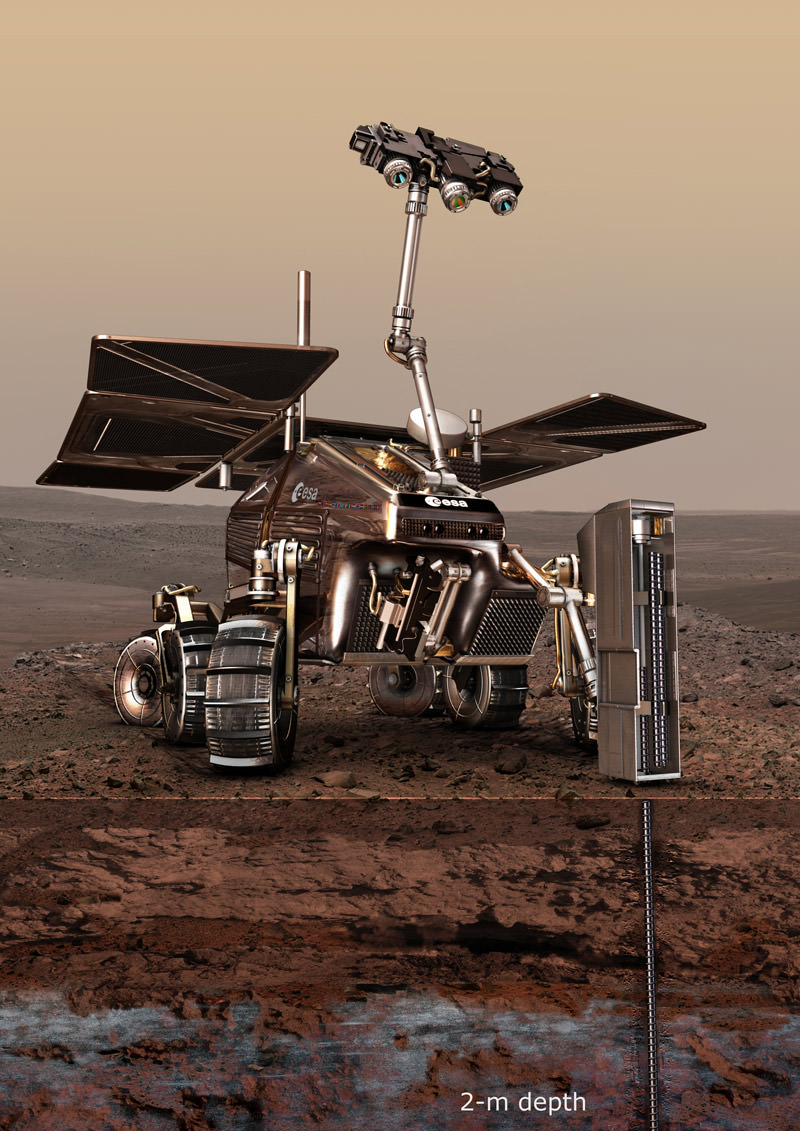NASA and the European Space Agency (ESA) have officially agreed to combine their efforts in the exploration and study of Mars. The heads of both agencies, NASA administrator Charles Boden and ESA director-general Jean-Jacques Dordain signed an agreement that officially binds the two agencies together for upcoming orbiter and rover missions. Discussions of this cooperation began in December of 2008, and culminated in a meeting in June 2009, out of which came the official agreement signed last week.
The new “letter of intent” outlines the Mars Exploration Joint Initiative (MEJI), under which mission engineers will cooperate in the design and launch of rovers, orbiters and landers into the 2020s, with the ultimate goal of returning rocks from Mars to Earth for study. The first collaborative mission is a European-led orbiter that will also place a meteorological station on Mars planned for 2016. This will be followed by surface rovers to keep Spirit and Opportunity company (c’mon, you know they’ll still be ticking!) in 2018, and possibly a network of landers shortly after in 2018, one of which will include the ESA’s ExoMars Lander.
NASA will take care of the launching rockets for 2016 and 2018, and the ESA will cover the entry, descent and landing for the first mission in 2016.
The signing of this document makes official the talks held in Plymouth, UK this past June. Since the talks, most of the fine print has been worked out on the collaboration – this signing just seals the deal.
The ESA and NASA, both under financial constraints in their Mars exploration programs, envision this new union to allow both to to launch vehicles in the window that opens every 26 months for missions to Mars. NASA’s most recently planned mission to the Red Planet, the Mars Science Laboratory, missed the October 2009 window because of technical problems, so will have to be launched in 2011 instead. The same fate befell the ESA ExoMars lander, which has been postponed three times – until 2018 – from the initial launch date of 2009. This joint initiative aims at preventing such delays by sharing both engineering and financial responsibilities.
NASA’s associate administrator for science, Dr Ed Weiler, told the BBC back in July,”We have very similar scientific goals, maybe we ought to consider working together jointly on all our future Mars missions, so that we can do more than either one of us can do by ourselves.”
Hopefully, this collaboration will provide both administrations with the opportunity to get more science done for cheaper, and extend further the already amazing capabilities of proposed missions to the Red Planet.


So, several landers, several rovers, one meteorological station, and probably several orbiters as well, needed to replace those currently working as relay stations and producing great science and images while at it? All in the next 15 years?
Now this is what I call doing it for real! Yes! 🙂
Great news, and it’s about time, too!
Why they didn’t start going down that road at least ten or fifteen years ago defeats me…
Thank the sweet lord. Now, being a cross-continent collaboration, let’s ensure that there are no metric-imperial number conversion issues to sink the ship this time around.
Damn, you know if a person was to make a realistic radio control toy rover that was a faithful reproduction of Spirit and Oppy, they’d sell a TON of them. Just sayin.